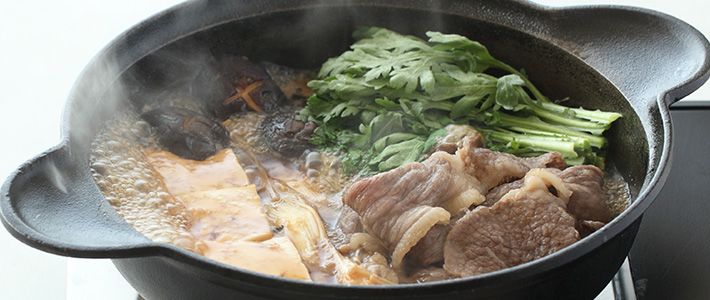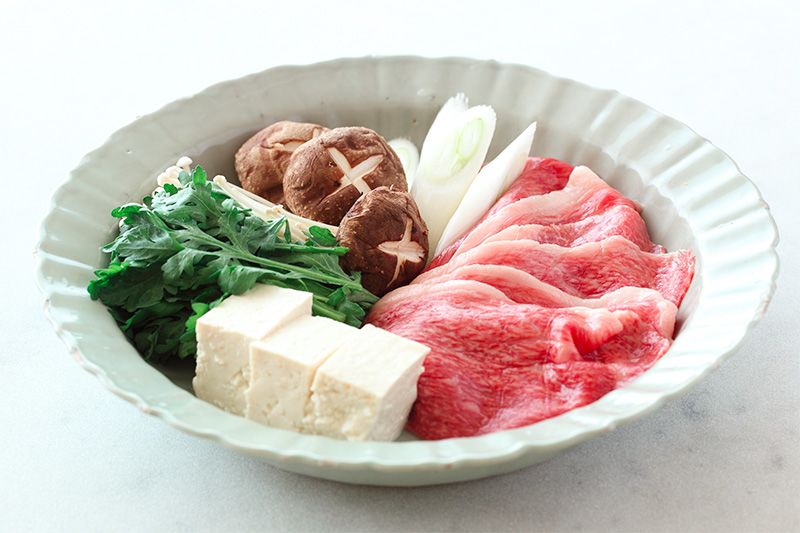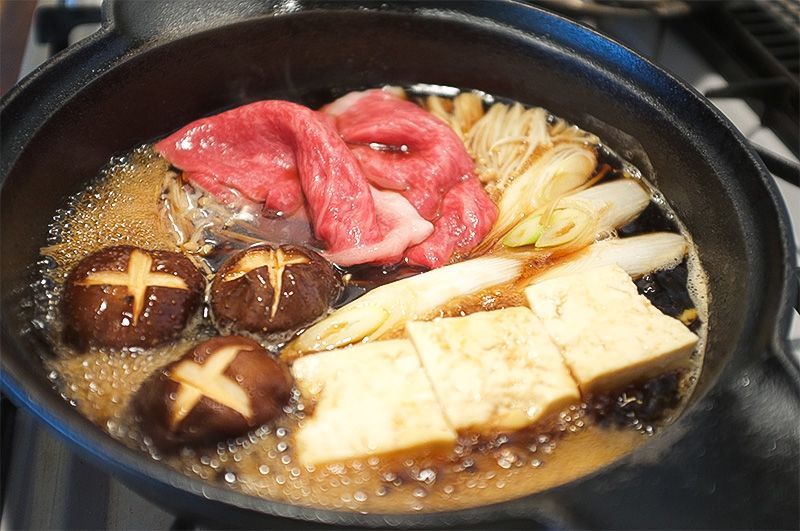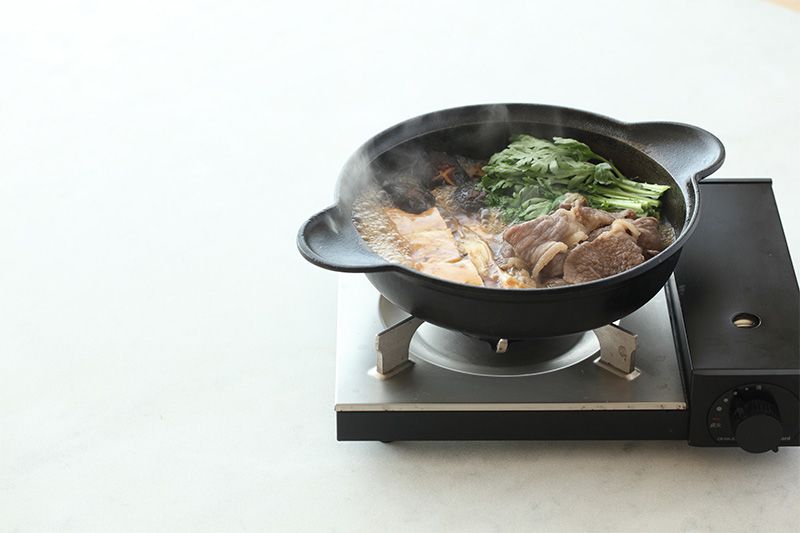
Shortcuts to Scrumptious Japanese Food
Sukiyaki: Gather Round the Pot for a Warming, Filling Meal
Guideto Japan
Culture
The first recipe in the series is sukiyaki, known the world over as the title of a popular Japanese song. It looks sumptuous and tastes delicious, but is a snap to cook: just simmer beef and vegetables in a sauce made with sugar, mirin (sweet cooking sake), soy sauce, and sake. Switch out ingredients to your liking in this flexible dish, a perfect one to share with friends and family in colder months.
- English
- 日本語
- 简体字
- 繁體字
- Français
- Español
- العربية
- Русский
Ingredients (serves 2–3)
- 350 g thinly sliced beef
- Vegetables of your choice (standard Japanese choices include shungiku or garland chrysanthemum, naganegi onions, and shiitake mushrooms)
- 1 pack (300 g) momen (firm) tōfu
- Water or kelp dashi stock, as desired
- Eggs (optional)
- Udon noodles (optional), to add later
- Four-ingredient sauce:
- 1/2 cup sugar
- 1/2 cup mirin (sweet cooking sake)
- 1/2 cup soy sauce
- 1/2 cup sake
Directions
- Pour about a third of the sauce into a pot and stir.
- Cut the tōfu, vegetables, and meat into easy-to-serve sizes.
- Place the pot on heat. When the sauce is heated through, add several slices of beef and the negi onions. Briefly simmer the beef, turning over once, then serve in a bowl and savor the meat.
- Add the remaining sauce and solid ingredients. Continue to simmer as you eat, serving your choice of cooked ingredients into your bowl. I recommend adding beaten egg in the bowl and dipping the sukiyaki in it. When the sauce thickens, adjust the taste by adding water or dashi stock to the pot. Simmering preboiled udon noodles in the remaining sauce is a delicious way of topping off the meal.
Cooking Tips
- One of the greatest things about nabe (hot pot) dishes is that everyone gets to choose what to take and how much to eat. Children and adults can enjoy the meal together, and sitting around a hot pot makes for a lively conversation. Sukiyaki is ideally served in a low-rimmed pot on a heat source in the middle of the dining table. If you don’t have a hot plate, heat the food on your stove and bring the pot to the table for diners to choose their food, reheating on the stove as needed.
- Try using a variety of locally available vegetables—endives, arugula, you name it. As long as you have thick long negi onions, shiitake mushrooms, and beef, it will have the feel of sukiyaki.
- If mirin is unavailable in stores near you, dissolve 1–2 tbsp of sugar in 1/2 cup white wine to create a substitute.
- Tōfu comes in two kinds: the firm momen (literally “cotton”) and softer kinu (“silken”). Momen tōfu is better suited for sukiyaki as it is firmer and less prone to breaking apart when cooked.
- If thinly sliced beef is not available, cut a block of short rib or other meat into slices and reduce thickness by pounding. While tender beef is preferable, cooking with chicken is also tasty.
- Laying out the uncooked meat and vegetables on large dishes and placing them on the table separately from the sukiyaki pot will enliven the atmosphere, although you could put all the ingredients in the pot before setting it on the table. Everyone can add what they want to the pot, a little at a time, and let simmer. Green vegetables tend to get mushy easily, so it is best to add them toward the end.


